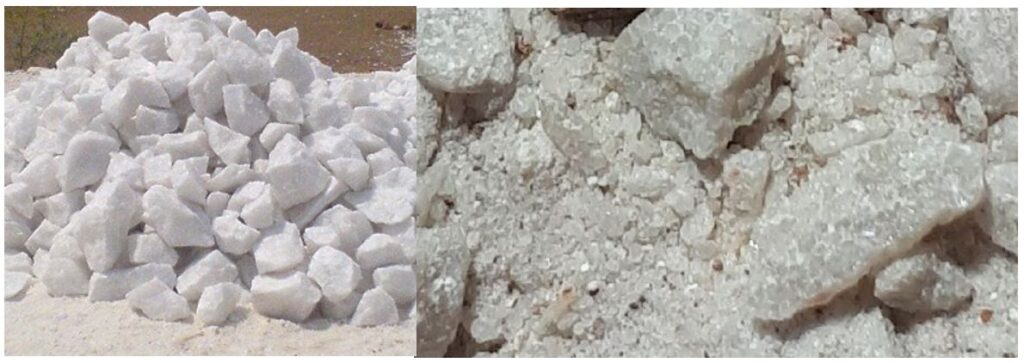Silicon oxide (SiO2) or silica is a chemical compound found in pure form or in combination in silicate minerals. The name silica is used for all minerals that contain SiO2, even if they are crystalline, physically and geologically different.
About 60% of the Earth’s solid crust is silica. The different types of main sources of silica are: sandstone and silica sand, quartz and quartzite, crystal crystal, triple and novolite, synthetic silica and chemical silicon, baton and silica diatomite based on weight percentage and purity of the same known sio2 and purity. Is priced.

In addition to the percentage, SiO2 in the mineralogical structure of the rock also plays an important role in determining its quality and uses because SiO2 may be present in the form of silicates, thus this issue will determine the mineralization method and how to remove impurities. . The physical properties of silica will be affected in the same way suitable for crushing, granulation of produced silica powder and determining the uses of the produced powder.
Types of silica rocks
Silicon is found in nature in different forms due to the different crystalline structures it forms, which include:
- Quartz: Quartz is usually colorless or white but is often colored with impurities such as iron and can then be colored. Quartz may be transparent, so its use in glass is also recommended.
Quartz is a hard mineral that has the ability to bond between atoms and scratches glass. Quartz is also the most stable polymorphic form of silicon, which has a very high hardness, and silica is more commonly found in nature in this form.
- Sand: It is a type of quartz sedimentary rocks that are crushed in nature and are bonded together by other materials such as clay, iron oxide and lime.
- Flint: Flint is composed of a variety of silicates and very fine crystals of quartz, water, calcium carbonate and organic matter. Flint color is light brown, gray or black, which turns white due to heat and burning of organic matter. This form of free silica is formed by dissolving the siliceous skeleton of spongy animals in seawater and then settling on the seabed.
Major applications of silica
In general, the uses of silica are:
- Silicon production
- Production of ferrosilicon
- Casting and refractory
- Glass and crystal industries
- Sand filters for all types of pools
- Filtration and purification of well water turbidity at the entrance of houses and villas
- Glassmaking
- Ceramics
- It is used as crushed stone as a building material.
- Raw materials are used in industries such as chemical industry, ferrosilicon, fiberglass, sodium silicate, ferrochrome and cement test sand.
Properties of silica used in the production of silicon
The presence of silica in the production of silicon is no alternative and the use of high purity stones is recommended. (Lower purity will cause more energy consumption and lower product grade).
مجید دستگیر
سلام، در نظر داریم جهت تولید سلولهای خورشیدی از ابتدا سنگ سیلیکون و همچنین پلیمر سیلیون راه اندازی کنیم.
لطفا راهنمایی فرمایید.
با تشکر
مجید دستگیر